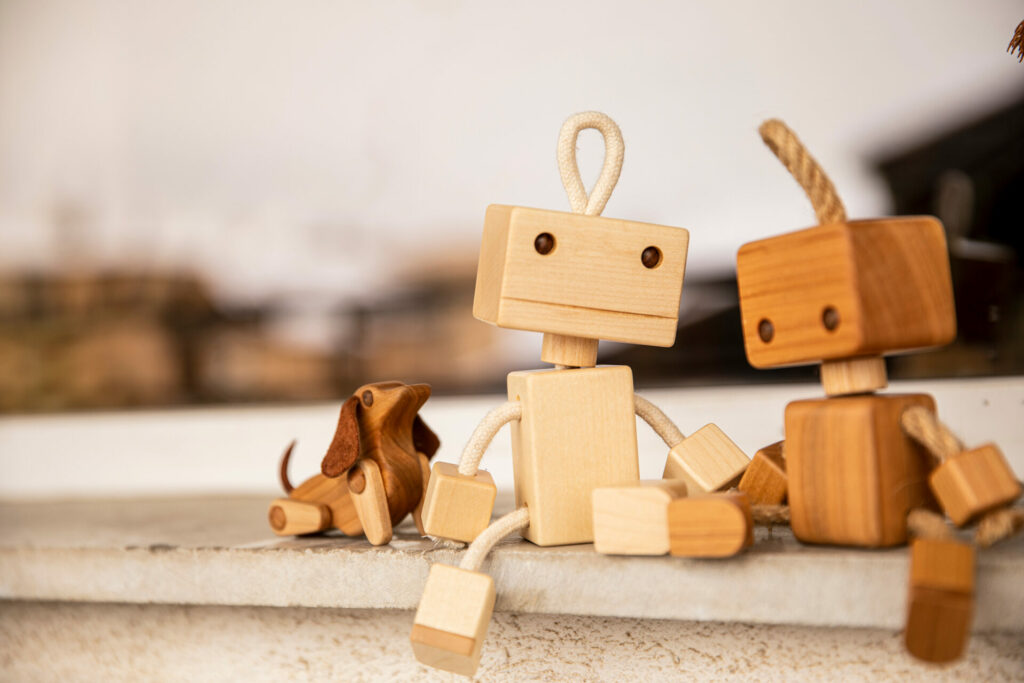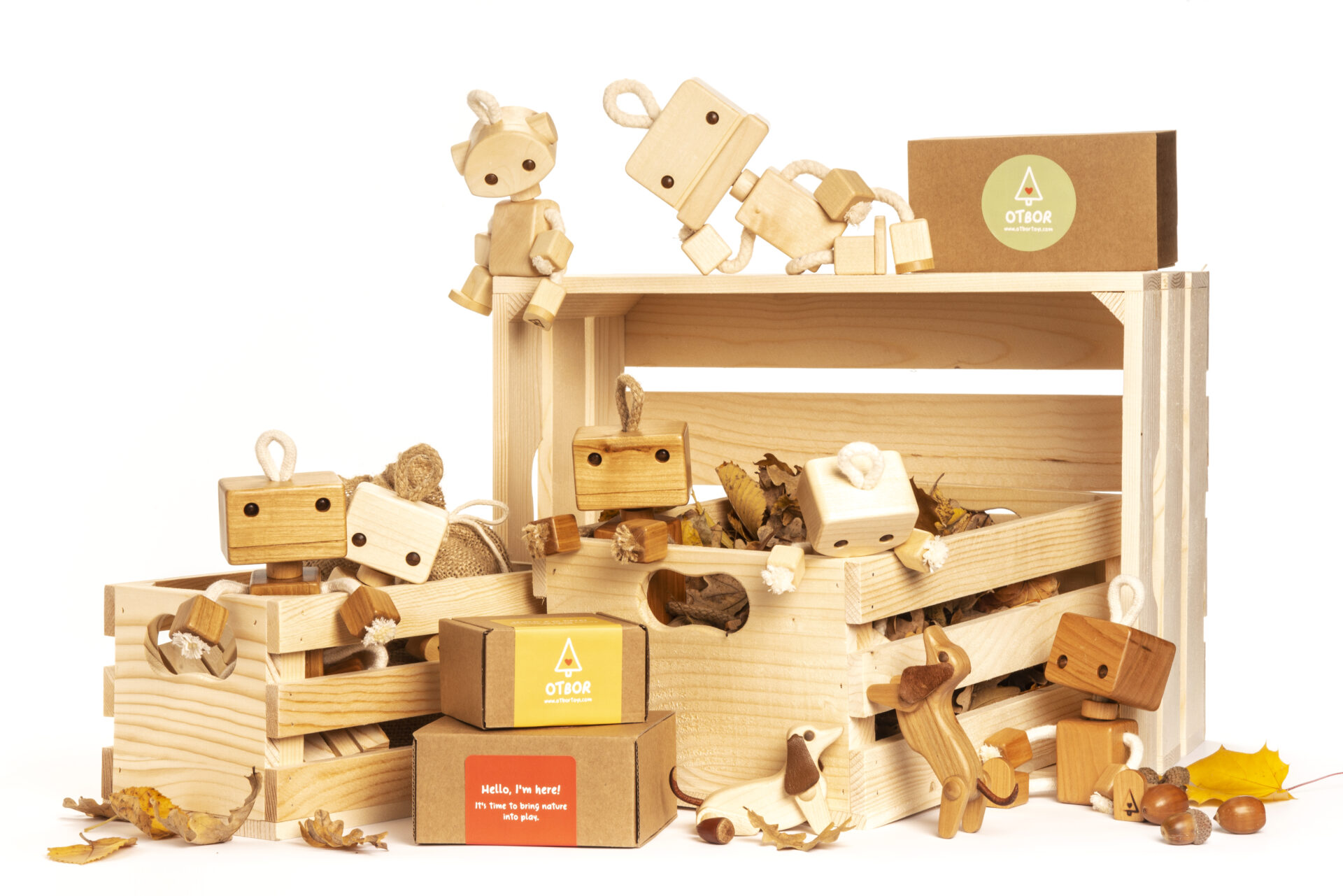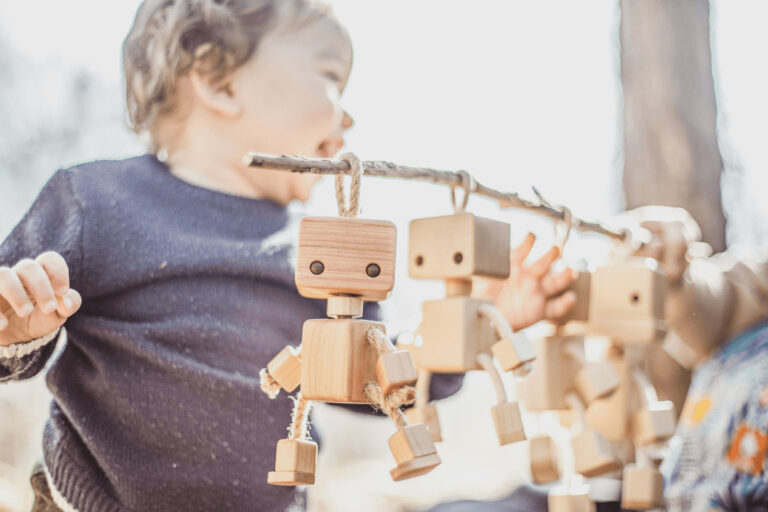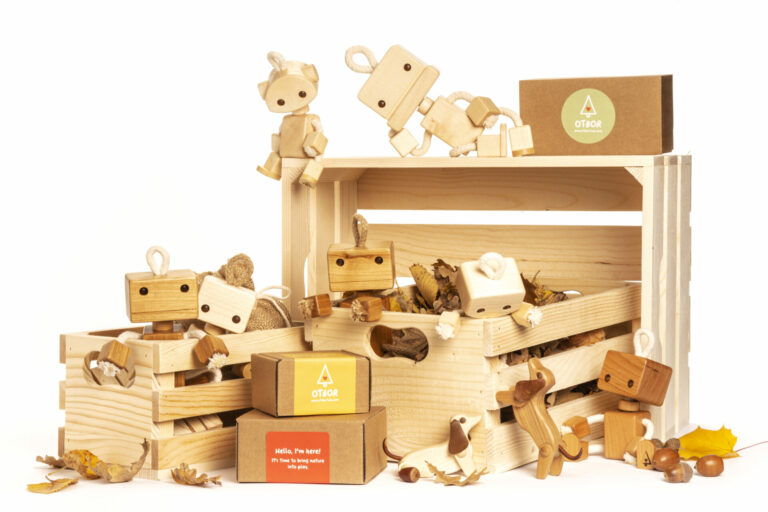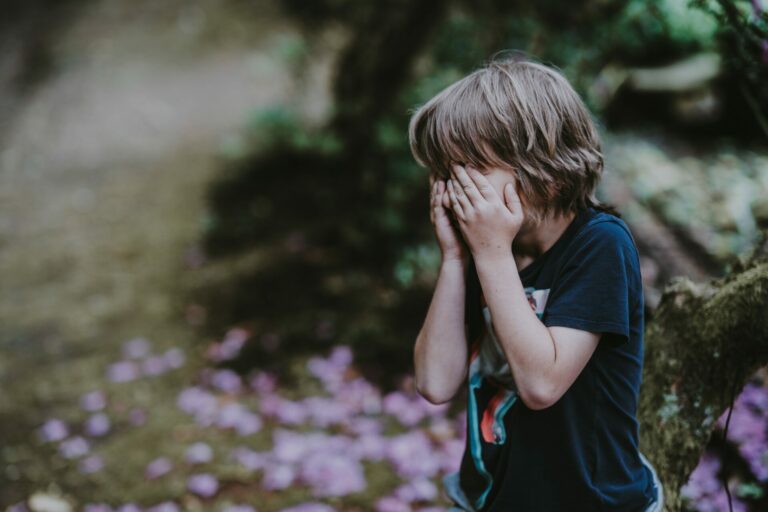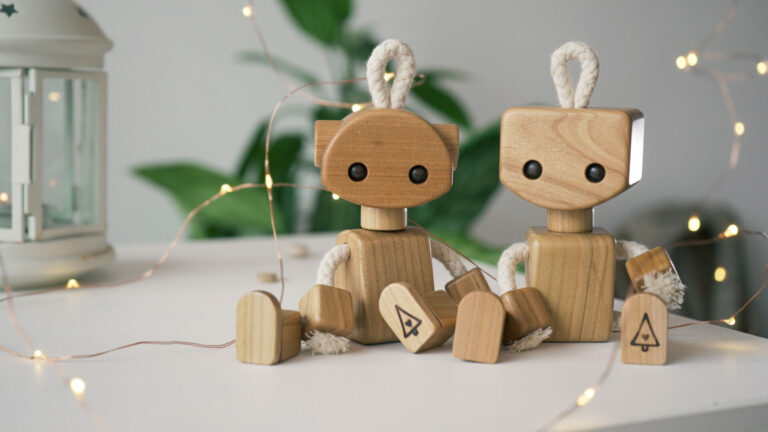A New Era for Wooden Toys
The global wooden toy market continues to grow rapidly, fueled by parents’ demand for eco-friendly, high-quality, and development-focused products.
According to market research, the industry is projected to rise from $28.9 billion in 2025 to over $36 billion by 2030, showing that wooden toys are no longer just a nostalgic choice — they are the future of conscious play.
As digital devices dominate childhood, families are rediscovering the beauty of simple, tactile, and meaningful play experiences. 2026 is shaping up to be the year where sustainability, personalization, and cognitive development meet elegant design.
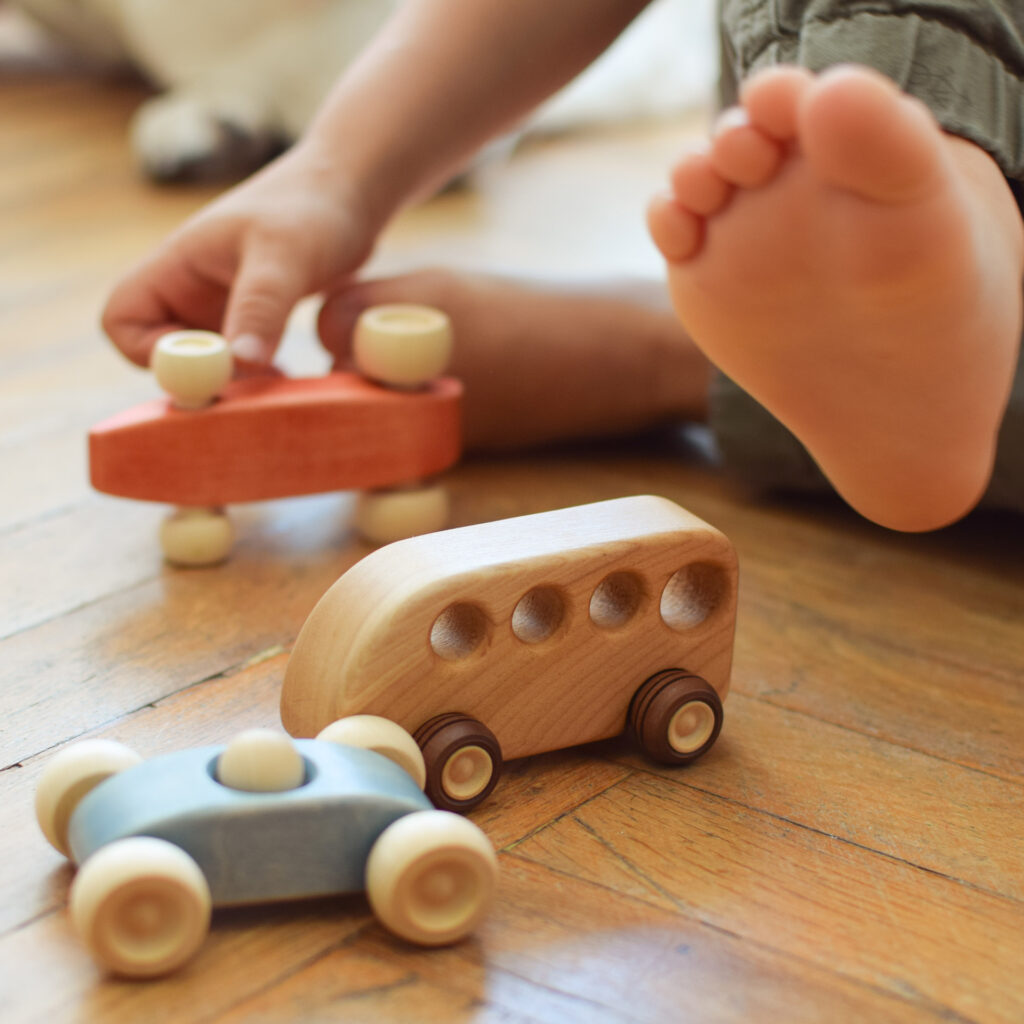
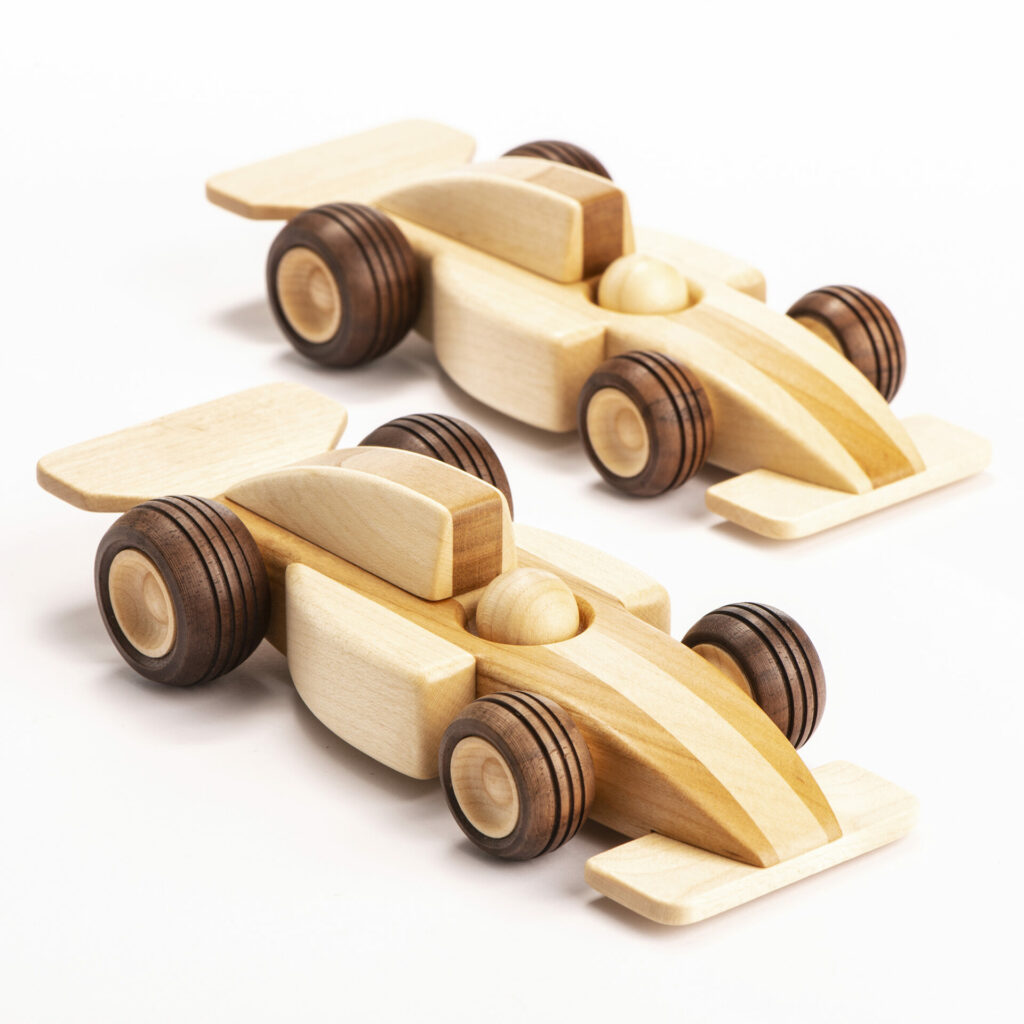
Sustainability Becomes Non-Negotiable
Eco-friendly values are now central to how families choose toys. In 2026, wooden toys made from certified sustainable sources (FSC, PEFC) and finished with non-toxic paints and natural oils will dominate shelves.
Parents increasingly look for transparency — where was this made, by whom, and how does it impact the planet?
Brands that tell this story authentically — highlighting responsible forestry, local craftsmanship, and recyclable packaging — will earn trust.
Tip for toy makers:
- Showcase your materials and process visually — photos of the wood grain, workshops, artisans at work.
- Replace plastic packaging with biodegradable or reusable cloth bags.
- Add simple messages like “Made with sustainable beech wood and child-safe paints.”
At Otbor, sustainability isn’t a trend — it’s our foundation. Every piece of wood we use is carefully selected, sanded by hand, and designed to last for generations.
2. The Rise of Educational & STEAM-Inspired Wooden Toys
2026 will strengthen the shift toward learning-driven play. Parents want toys that nurture motor skills, coordination, creativity, and even early science and math thinking.
Wooden blocks, puzzles, balancing toys, and modular sets are perfect for this — they teach logic and patience while allowing open-ended play.
Unlike digital apps, wooden toys don’t prescribe the rules — they inspire children to invent their own.
The connection to the STEAM movement (Science, Technology, Engineering, Arts, and Math) is growing stronger. Expect to see:
- Construction sets that challenge engineering thinking
- Pattern-recognition games that boost memory
- Montessori-inspired materials that develop independence
At Otbor, our wooden robots and vehicle sets are designed to engage both hands and imagination — encouraging critical thinking through natural, screen-free play.
3. Personalization & Handmade Character
Mass production is losing appeal. In 2026, the emotional connection between child and toy will matter more than ever. Parents are seeking unique, personalized toys that feel crafted for their child.
Hand-engraved names, birth dates, or custom color palettes give families something to treasure. This shift favors smaller, boutique brands like Otbor, where every item carries the warmth of craftsmanship.
Key insight:
The “made-by-hand” aesthetic — visible wood texture, natural imperfections, and minimalist design — signals authenticity and becomes part of the product’s charm.
Hybrid Play: Where Tradition Meets Modernity
While wooden toys remain proudly analogue, 2026 will see more creative fusions between classic materials and digital storytelling.
Some brands experiment with:
- QR-coded story cards or short videos that expand the child’s world
- Interactive instructions that parents can access via smartphone
- Augmented reality layers that don’t replace the toy but enrich the narrative
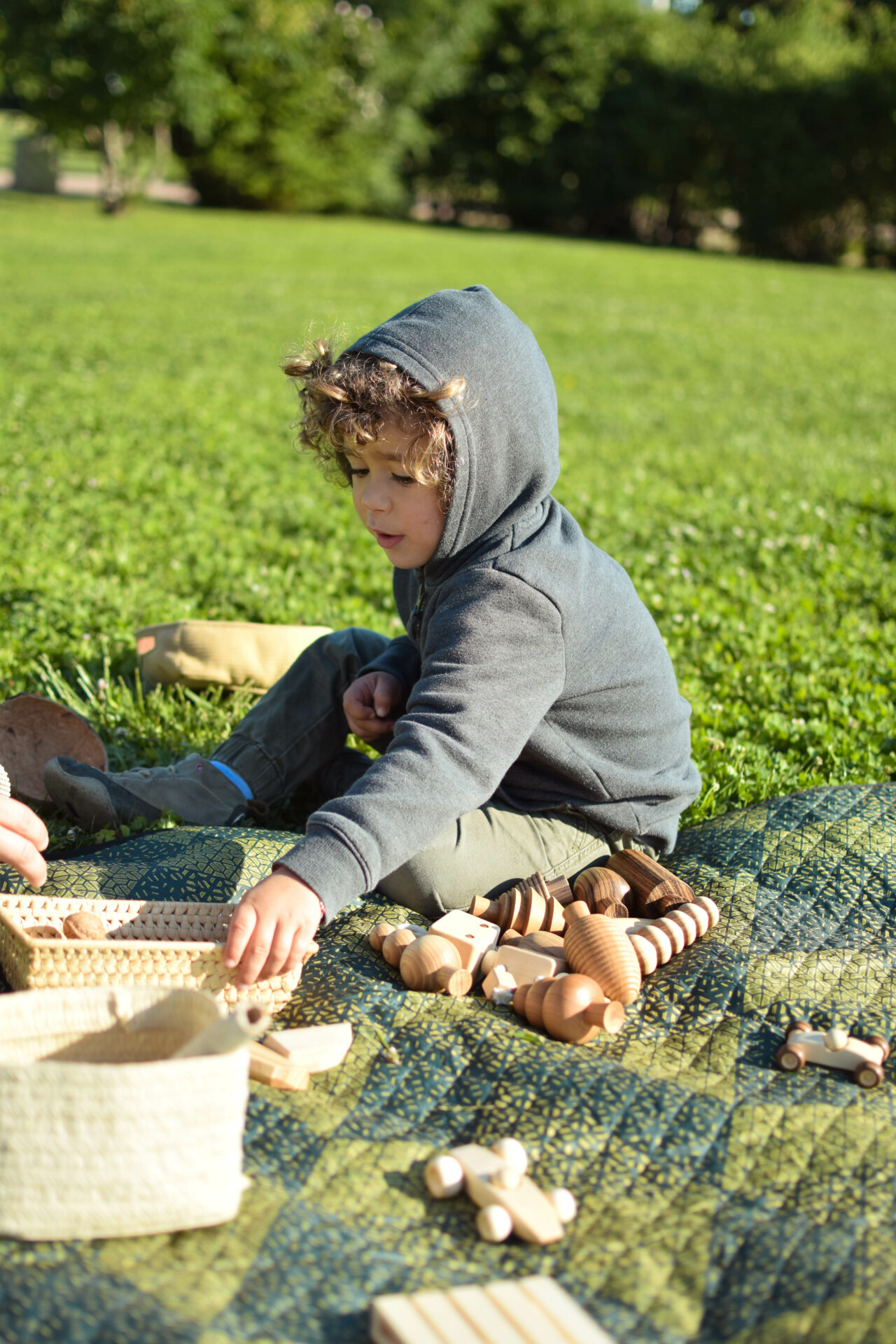
The balance is crucial: the core experience stays physical, tactile, and imaginative. Technology simply adds context, not distraction.
For Otbor, this means exploring playful ways to combine tradition and innovation — perhaps an app that tells the story of each toy’s character, while the child plays freely in the real world.
5. Open-Ended, Active, and Outdoor Play
One of the strongest post-pandemic trends continues into 2026: the return to outdoor and active play.
Parents are seeking ways to get kids moving, connecting with nature, and engaging in social, imaginative adventures.
Wooden toys fit perfectly — durable, safe, and weather-resistant. Balance boards, outdoor building kits, or sand-friendly vehicles align with this mindset.
These products don’t just entertain; they encourage movement, teamwork, and sensory exploration.
In a world dominated by screens, giving children toys that grow with them — adaptable, durable, endlessly re-inventable — is an act of care.
6. Authentic Storytelling & Conscious Brands
Consumers increasingly choose brands that have a story. Wooden toy makers who communicate their values — craftsmanship, family, sustainability, and creativity — will build loyal communities.
For example:
- Sharing “behind the scenes” videos of how toys are made
- Introducing the artisans behind each product
- Explaining how every design supports a stage of development
This storytelling transforms a simple wooden toy into a symbol of mindful childhood.
Otbor’s philosophy — Play with purpose. Build with heart. — resonates with modern parents who want to buy less, but better.
The Future Is Wooden — and Human
The toys of 2026 won’t be about flashing lights or digital noise.
They’ll be about connection, sustainability, and creativity — values that never go out of style.
For parents, it’s about giving children freedom to imagine.
For makers like Otbor, it’s about crafting that freedom, piece by piece, from something real.
Otbor Toys – handcrafted wooden play companions that inspire creativity, curiosity, and care for the world around us.
Explore our collection at otbor.toys and join the movement back to meaningful play.
